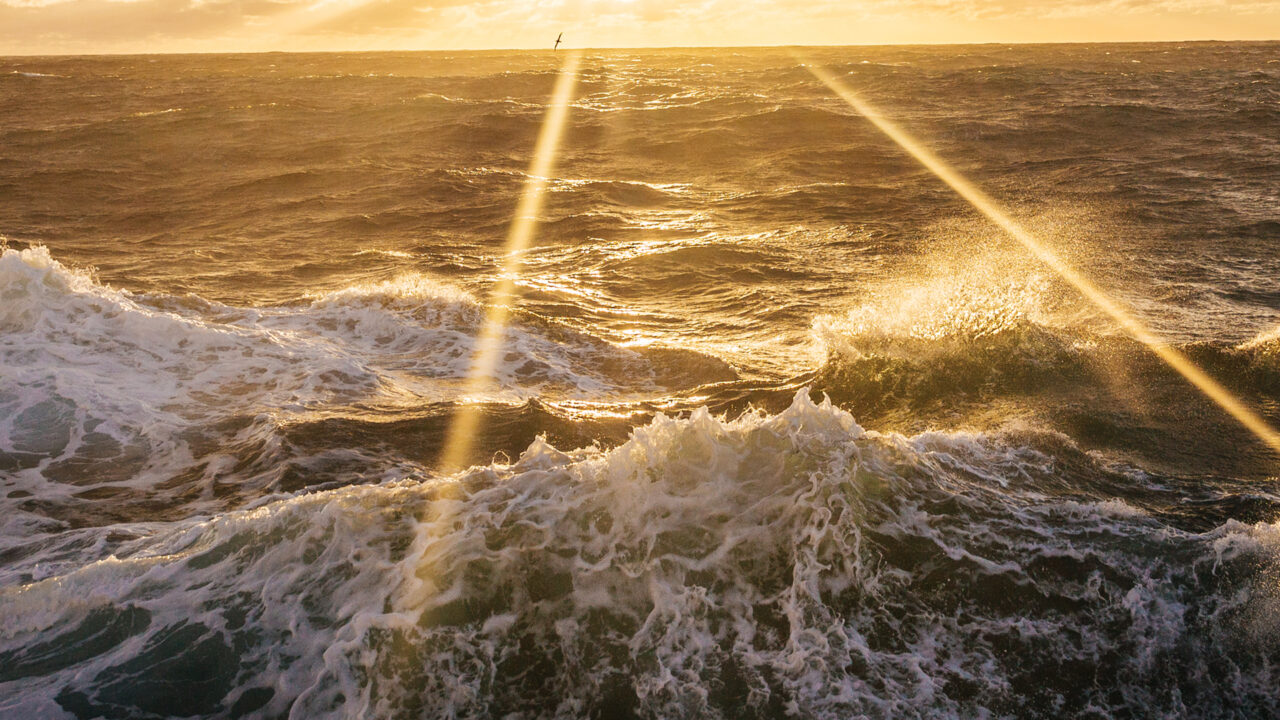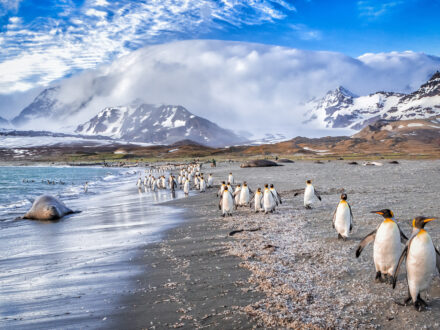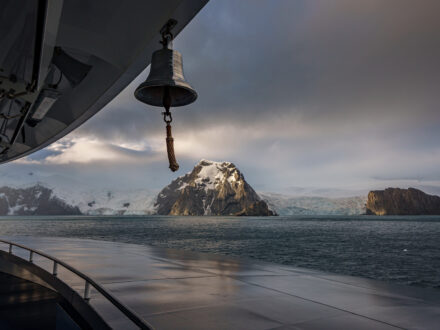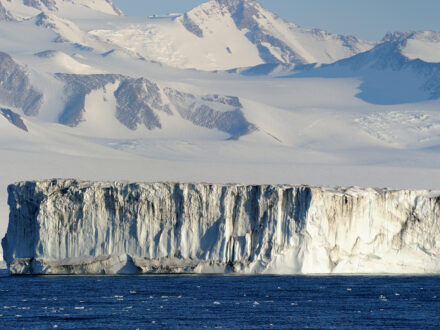How Dangerous Is The Drake Passage? Should I Fly Or Cruise?

The most popular way to see Antarctica involves embarking from Ushuaia, Argentina for the magnificent, wildlife-thronged Antarctic Peninsula. And there’s no more notorious part of this once-in-a-lifetime sail than the Drake Passage.
This 500-mile-wide reach of ocean separates the southern tip of South America and the South Shetland Islands, that Antarctic archipelago serving as a gateway to the White Continent itself. The Drake Passage ranks among the most notoriously rough sea crossings on the planet, and that infamous distinction causes more than a few travelers arranging a bucket-list journey to Antarctica a fair amount of pre-trip fretting—and may influence what itinerary they select altogether.
But just how dangerous is the Drake Passage? Is it dangerous at all? Does it deserve its fearsome reputation? What should you expect if you decide to take this fateful route, and do you have an alternative option? Let’s dig into the “dreaded” Drake for answers!
Introducing the Drake Passage
The Drake Passage is significant for far more reasons than the obstacle—or, from a different perspective, adventure—it poses to many Antarctic sightseers. Indeed, gallon for gallon it probably deserves a slot on the shortlist of the planet’s most influential seas. Its consequential geography also explains—via the nuts-and-bolts of our planet’s atmospheric and oceanic circulations—why it’s got such intimidating status.
Where is the Drake Passage & Why is it Significant?
The Drake Passage stretches between Tierra del Fuego’s Cape Horn, the southernmost extremity of South America, and Livingston Island in the South Shetlands. That 500-mile span marks the narrowest portal between Antarctica and the nearest continental landmass.
Besides offering the shortest sea crossing to the White Continent, the Drake Passage also marks the tightest choke-point for Earth’s mightiest current: the Antarctic Circumpolar Current, more pithily (and poetically) called the West Wind Drift. The east-running West Wind Drift incorporates the poleward arms of the Southern Hemisphere’s great oceanic gyres, which circulate counterclockwise in the Pacific, Atlantic, and Indian oceans.
Ice shelves
In the Northern Hemisphere, the analogous mid-ocean gyres (which flow clockwise) are fully separated by the “top half” of the planet’s extensive landmasses. But in the Southern Hemisphere, the West Wind Drift flows unobstructed around the liquid vastness of Earth’s bottom end—a continuous stream linking the waters of the three major ocean basins, and creating the “moat around the fortress” that blocks off the incomparably remote Antarctic realm from the other continents.
That “moat” translates to more than 130 million cubic meters of water per second carried by the West Wind Drift through the Drake Passage: a hundred or more times the collective discharge of all the rivers on the planet.
Besides helping establish the isolation of Antarctica, the opening of the Drake Passage sometime between 17 and 50 million years ago or so made the free flow of the West Wind Drift possible. This Circumpolar Current is enormously influential in establishing and maintaining the heat transfers and circulations inherent in the World Ocean. And, accordingly, the depth and width of the Drake Passage, as the West Wind Drift’s tightest funnel, is hugely important in shaping this global oceanic system.
The Weather & Seas of the Drake Passage: The “Drake Lake” vs. the “Drake Shake”
The “West Wind Drift” label for the Antarctic Circumpolar Current speaks to its establishment largely by the great east-blowing winds over the Southern Ocean: the westerlies.
Similar to ocean currents in the Northern Hemisphere being confined and warped by the large, cluttered continents, the westerlies of that hemisphere—while still the dominant weather-maker of the mid-latitudes—are slowed and altered by the vast land’s frictional drag, temperature effects, and other influences. But in the Southern Hemisphere, where the continents generally narrow southward from the equator, the westerlies stream along mostly over open ocean—and entirely over it in the zone of the Southern Ocean. These less-altered westerlies of the Southern Hemisphere are thus significantly stronger and steadier than their Northern Hemisphere counterparts.
Along with whipping up the West Wind Drift, the westerlies of the Southern Ocean are significant for their influence on seafaring. Mariners historically coveted or cursed this muscular airstream, depending on which direction they needed to go. Long-distance easterly sailing down here was made mighty efficient by the powerful westerlies, which—increasing in strength southward—well earned the associated latitudes their nicknames of Roaring Forties, Furious Fifties, and Screaming Sixties.
More ice shelves
The strong westerlies alone aren’t the only component of the fierce weather for which the Southern Ocean—and the Drake Passage—are known. The strong temperate contrast between Antarctic polar air and warmer maritime air to the north helps spur strong fronts and frequent cyclonic storms here, whipping up big swells. The Drake Passage wave height can be on the order of 40-odd feet (12 meters).
Heaving seas and howling gales are certainly one manifestation of the Drake Passage: the manifestation widely known among ship passengers as the “Drake Shake.” Yet many a crossing of the Drake Passage experiences the other end of this seaway’s disposition: the calm winds and waters defining the so-called “Drake Lake.”
Is the Drake Passage Dangerous?
Back in the day of wooden clippers, old-school navigational equipment, and primitive weather forecasting, the Drake was certainly a dangerous stretch of water to enter. Needless to say, there are more than a few Drake Passage shipwrecks: more than 800 ships are believed to have succumbed to its waters, tragically claiming the lives of some 20,000 sailors in the process. To this day, to a schooner, or (gasp) sea kayak, this West Wind Drift chokepoint remains a hazardous undertaking, but as far as the modern expedition vessels and cruise ships that carry passengers from Ushuaia to the Antarctic Peninsula go, the Drake isn’t really dangerous these days.
It can still be a rather exciting voyage, to be sure, especially when those epic Drake Passage waves are cranking and waves are breaking extravagantly against the bow. But these specialized, ice-worthy crafts boast sturdy hulls and advanced stabilizing mechanisms, and their captains navigate with state-of-the-art technology and close scrutiny of the most up-to-date forecasts. Drake Passage rough seas are often easily weathered, or can be efficiently detoured around; a bad storm may mean a crossing is briefly delayed.
You’ve got a good chance of enjoying “Drake Lake” conditions on your voyage, or at least a Drake Passage of only moderate tempestuousness, with typically only 30% of Drake crossings experiencing rough weather. This so-called “Drake Shake”—or any queasiness you might experience even in milder conditions—can be countered with seasickness tablets, patches, and other treatments, including more potent ones administered by attentive onboard doctors. Staying hydrated, eating small amounts of food regularly, and gazing at the horizon are other ways to deal with seasickness, which affects many passengers but rarely really spoils the journey.
Worth it
To Cruise or Fly the Drake Passage?
It usually takes about two days for a cruise ship to make the Drake Passage crossing. Most passengers end up relishing the journey; heck, some even hope for the Drake Shake, considering the endurance of this infamous sea crossing at its testiest a badge of honor, a sacred rite of (Antarctic) passage, or simply a sailor’s sacrifice for the spoils that await—often referred to as ‘paying the Drake Tax’. And besides the thrill of experiencing its character and remoteness firsthand, the Passage itself serves up many enticements: abundant marine mammals (including a variety of whales) and seabirds (from skuas to albatrosses), and, once a ship’s deep enough in, often the first icebergs you’ll clap eyes on during your Antarctic odyssey.
But those who have limited time for their trip, or who suffer acute-enough seasickness, may want to skip the cruise across the Drake Passage. And that’s absolutely a possibility: Choosing the popular alternative of flying from Punta Arenas, Chile to King George Islands in the South Shetlands, you can zip over the Drake in a neat two hours, avoiding its potentially heavy seas and howling winds. This tends to be pricier, and you miss out on the unique pleasures (and bragging rights) of sailing through a legendary oceanic frontier, but it can be the best choice depending on your schedule, your interests, and your constitution.
You don’t have to fear the Drake Passage: At worst, your trip across it might be temporarily held up, or you may have to bunk up awhile until highly effective seasickness treatments see you to the other side of some queasiness. But the 48 or so hours chugging across this wild waterway typically end up being their own memory-minting highlight of an odyssey to the White Continent.
Disclaimer
Our travel guides are for informational purposes only. While we aim to provide accurate and up-to-date information, Antarctica Cruises makes no representations as to the accuracy or completeness of any information in our guides or found by following any link on this site.
Antarctica Cruises cannot and will not accept responsibility for any omissions or inaccuracies, or for any consequences arising therefrom, including any losses, injuries, or damages resulting from the display or use of this information.














































